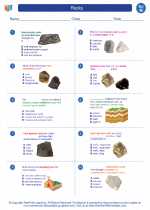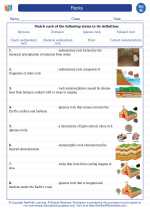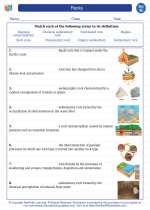Rocks -> weathering
Mechanical Weathering
Mechanical weathering occurs when rocks are physically broken down into smaller pieces without any change in their chemical composition. This can happen through processes such as frost wedging, where water seeps into cracks in rocks and then freezes, causing the cracks to widen. Another example is abrasion, where rocks are worn down by friction from wind, water, or other rocks.
Chemical Weathering
Chemical weathering involves the breakdown of rocks and minerals through chemical reactions. For example, when carbon dioxide in the air dissolves in rainwater, it forms a weak acid called carbonic acid, which can dissolve minerals in rocks. Another example is oxidation, where minerals containing iron react with oxygen to form rust.
Factors Affecting Weathering
Several factors can affect the rate of weathering, including the type of rock, climate, and vegetation. For example, rocks with many cracks and fractures are more susceptible to mechanical weathering. In humid climates, chemical weathering is more prevalent due to the presence of moisture, while in arid climates, mechanical weathering may be more common.
Effects of Weathering
Weathering plays a crucial role in the formation of soil and contributes to the Earth's geological processes. It also shapes the landscape by breaking down rocks and minerals, leading to the formation of sediment and sedimentary rocks.
Study Guide
Here are some key points to remember about weathering:
- Define weathering and distinguish between mechanical and chemical weathering.
- Identify examples of mechanical and chemical weathering processes.
- Explain how factors such as rock type, climate, and vegetation influence the rate of weathering.
- Describe the effects of weathering on the formation of soil and the shaping of the landscape.
Understanding weathering is essential for comprehending the Earth's surface processes and the formation of various geological features. It also provides insights into the interactions between Earth's systems and human activities.
.◂Science Worksheets and Study Guides Eighth Grade. Rocks

 Worksheet/Answer key
Worksheet/Answer key
 Worksheet/Answer key
Worksheet/Answer key
 Vocabulary/Answer key
Vocabulary/Answer key
 Vocabulary/Answer key
Vocabulary/Answer key
 Vocabulary/Answer key
Vocabulary/Answer key
